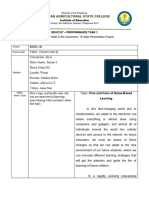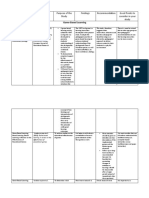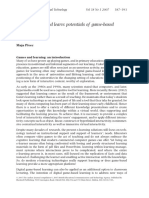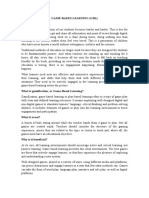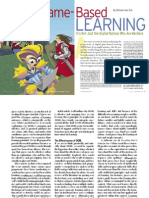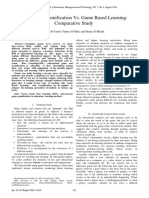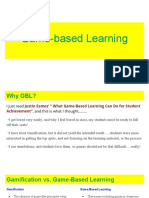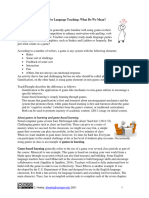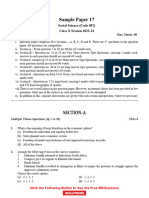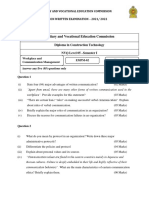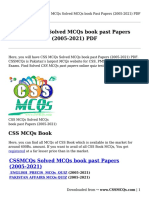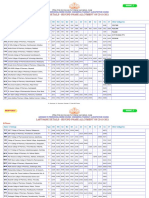0% found this document useful (0 votes)
28 views4 pagesGame-Based Learning Project.
Game-Based Learning (GBL) is an educational approach that integrates games into the learning process to enhance engagement, motivation, and skill acquisition. It can be categorized into educational games, gamification, and the use of commercial games for educational purposes, with successful implementation relying on clear learning objectives, game mechanics, and player engagement. While GBL offers advantages like increased retention and personalized learning, it also faces challenges such as cost, time investment, and the need for teacher training.
Uploaded by
francisojejinmiCopyright
© © All Rights Reserved
We take content rights seriously. If you suspect this is your content, claim it here.
Available Formats
Download as PDF, TXT or read online on Scribd
0% found this document useful (0 votes)
28 views4 pagesGame-Based Learning Project.
Game-Based Learning (GBL) is an educational approach that integrates games into the learning process to enhance engagement, motivation, and skill acquisition. It can be categorized into educational games, gamification, and the use of commercial games for educational purposes, with successful implementation relying on clear learning objectives, game mechanics, and player engagement. While GBL offers advantages like increased retention and personalized learning, it also faces challenges such as cost, time investment, and the need for teacher training.
Uploaded by
francisojejinmiCopyright
© © All Rights Reserved
We take content rights seriously. If you suspect this is your content, claim it here.
Available Formats
Download as PDF, TXT or read online on Scribd
/ 4



